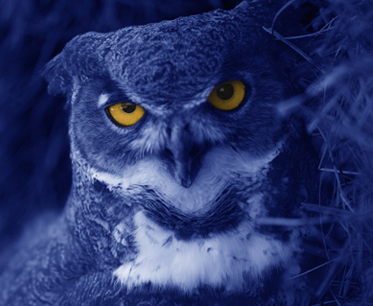
The long days of summer have finally arrived and Montanans across the state are exploring the outdoors from the prairies of the northeast to the Absaroka Mountains in the southwest. Like us, many animals take advantage of summer’s bounty. Red-tailed hawks hunt for ground squirrels in open fields. Swallows catch insects flying through the air and butterflies visit the numerous flowering plants in search of nectar. Animals active during the day are known as diurnal.
But when the sun finally sets across Big Sky Country, a new cast of characters appears on Montana’s backyard stage. The hawks, swallows, and butterflies active during the day are replaced by owls, bats, and moths when night falls. Animals active at night are known as nocturnal and have highly developed senses to help them navigate and find food in the dark.
There are many reasons why some animals prefer going about their business after dark. Amphibians, like the tiger salamander and boreal chorus frog, are most active at night to avoid the drying heat of the sun. Other animals take to the night to avoid competing with each other for food. If swallows specialize on catching flying insects during the day, bats are their nocturnal counterparts. There are 15 species of bat in Montana including the little brown bat which can consume 1,200 mosquitoes in one hour. By shifting the time of day they are active, bats and swallows can hunt in the same area without interfering with one another.
While swallows use their vision for locating and capturing insects during the day, bats use echolocation to find food at night. Echolocation works in a similar way to sonar. Bats emit a stream of high frequency calls as they fly through the air. The calls bounce off nearby objects back to the bat. Bats can tell how far away something is by how long it takes the sounds to return to them. In this way they build up a sonic map of their surroundings.
Though bats take to the night sky to avoid competing with swallows, other animals, like northern flying squirrels, are nocturnal to avoid predators. Northern flying squirrels are found in coniferous forests throughout western Montana. Flying squirrels don’t actually fly. Instead, these arboreal rodents glide from tree to tree using a specialized flap of skin connecting their forelimbs to their hind limbs. This flap of skin, or patagium, forms an air pocket allowing them to glide up to 160 feet.
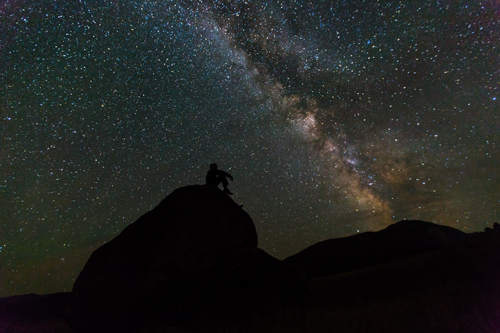
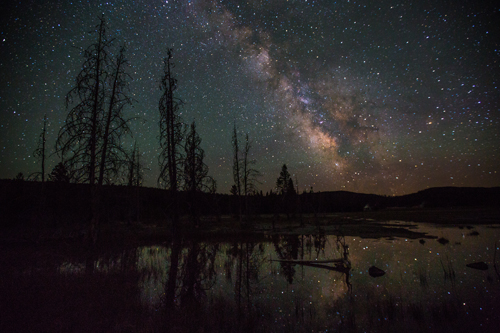
Flying squirrels have large eyes which help them navigate their nocturnal environment. Like all animals, their eyes are lined with cells called rods and cones. Cones are most useful for daytime vision while rods are best for low light conditions. As you might expect, nocturnal animals have many more rods than cones. Cones are what allow humans to see color, but because many nocturnal animals lack cones, their color vision is poor or absent.
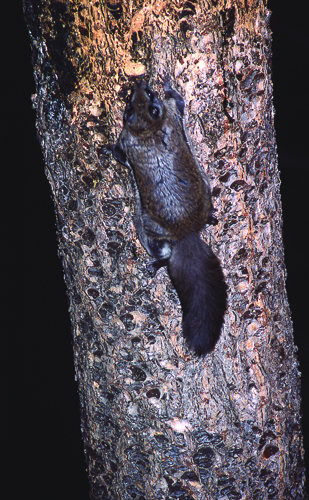
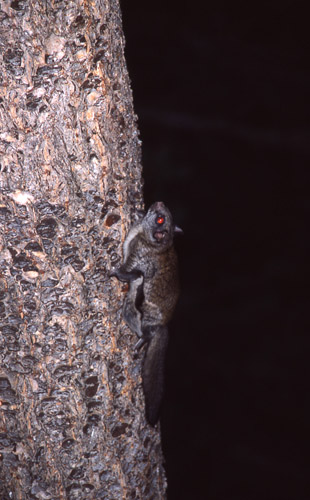
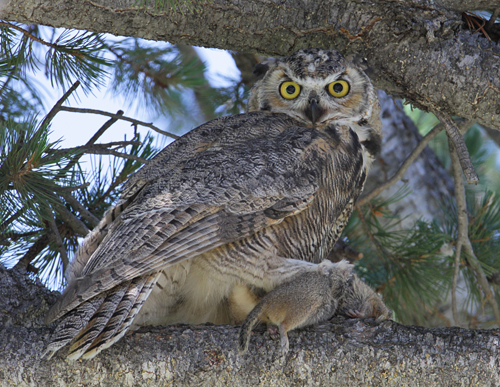
Nocturnal vision is less sharp than day time vision. To compensate for poor visual acuity, the eyes of nocturnal animals, like the flying squirrel, are large for their body size. Owls have some of the largest eyes of any nocturnal animal. If a great horned owl was the size of a human, their eyes would be as big as oranges. Because of the size and shape of their eyes, owls can’t rotate their eyes like we can. Instead, owls have the amazing ability to turn their heads more than 180 degrees to look in any direction.
Nocturnal animals have another unique adaptation for helping them see in the dark. Have you ever noticed how a deer or coyote’s eyes shine in headlights? The eyes of some animals appear to glow because of a layer of mirror-like cells located beneath the retina called a tapetum lucidum, which means “bright tapestry.” The tapetum reflects light back through the eye. This recycling of light helps animals make the most of dim conditions.
Different species’ eyes shine different colors. Deer’s eyes shine yellow while coyotes’ eyes shine green-gold. Black tailed jackrabbits’ eyes shine red and foxes’ eyes shine white. These color variations are caused by differences in the amount of minerals that make up the tapetum. The colors also vary within a species based on factors like age.
But there are other nocturnal adaptations beyond keen eyesight. For example, foxes, which are primarily nocturnal, have exceptional hearing. Foxes can hear a squeaking mouse from 100 feet away. Their long whiskers help them sense their environment in low light.
Like foxes, owls also rely on their keen sense of hearing to locate prey. Great horned owls are Montana’s most common owl species. They live in a variety of habitats from deep in the forest to your backyard. Great horned owls get their name for the two earlike tufts on their heads. These tufts of feathers have nothing to do with hearing. Instead, they serve to camouflage the owl while it roosts during the day.
Like all owls, great horned owls have asymmetric ears. With one ear located higher than the other, they’re able to determine whether a mouse or vole is above or below them based on the time it took for the sound to reach each ear. An owl’s sensitive hearing is enhanced by their facial ruff. The ruff is a concave surface of stiff feathers that frames their face and acts like a reflector to channel sounds to their ears. When an owl has finally located its prey, they fly silently through the night air thanks to a specialized fringe of feathers that muffles the sound of their wings. Small mammals stand little chance against such well-adapted nocturnal predators, except perhaps on moonlit nights.
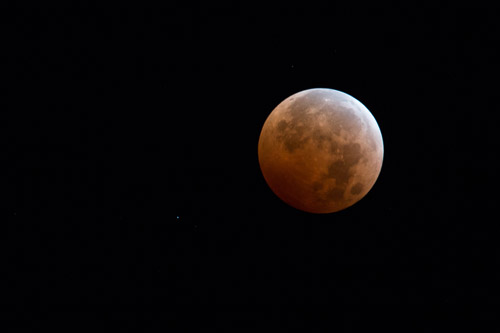
Under a full moon, small rodents have a better chance of escaping an owl’s sharp talons. Moonlight helps prey species like mice, rabbits, and voles detect predators more easily, particularly those that rely more on vision than on hearing for sensing their environment. While the full moon may benefit small mammals, predators like mountain lions, wolves, and bears tend to hunt less during a full moon, perhaps because their prey is better able to see them coming.
This may explain why coyotes howl more on moonless nights. Most people believe that coyotes howl at the moon, but this isn’t true. Coyotes may howl more on moonless nights in order to defend their territory against intruders or to gather their group for cooperative hunting since coyotes don’t see as well on darker nights.
While most of us wind down as the sun sets, Montana’s wild nightlife begin to emerge from their roosts, burrows, and dens. Owls begin hooting, mice scurry in the underbrush, and coyotes yip and howl. So before you turn in for the night this summer, take a moment to listen to the nightlife of Montana’s wildlife unfold. And take a flashlight. You never know which creature’s eyes you’ll find glowing back at you.
* * * *
* For another article by this author see Hibernation or Migration? from our Winter 2015 issue.
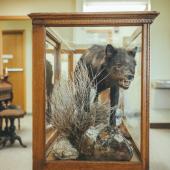



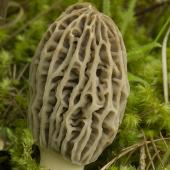
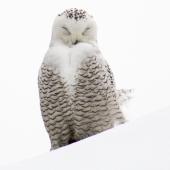

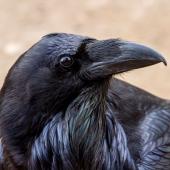
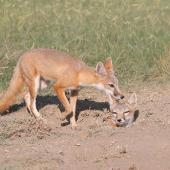
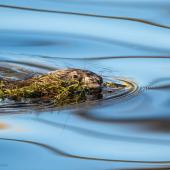

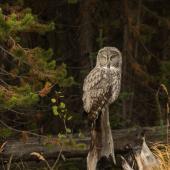
Leave a Comment Here